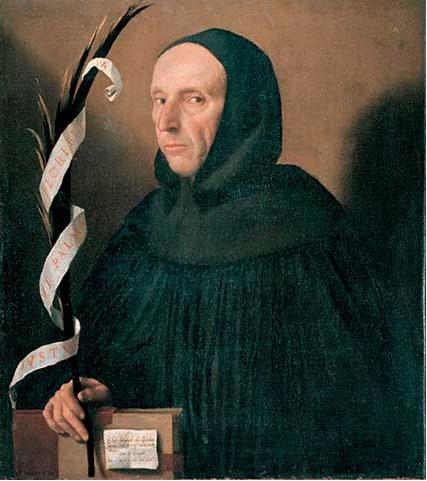Girolamo Savonarola, a Dominican friar whose name is synonymous with religious fervor, reform, and the Bonfire of the Vanities, was a complex figure whose life story is interwoven with the fabric of Renaissance Italy. Born on September 21, 1452, in Ferrara, Italy, Savonarola emerged as one of the most influential and controversial religious leaders of his time, leaving an indelible mark on the history of Florence and the Catholic Church.

Savonarola was born into a wealthy, noble family, but he eschewed a life of comfort and privilege for one of religious devotion. In 1475, at the age of 23, he joined the Dominican Order in Bologna, drawn to its strict adherence to poverty and chastity. His early years as a friar were marked by deep study and contemplation of the Bible and the works of St. Thomas Aquinas, which would later form the foundation of his fiery sermons and reformist ideas.
In 1490, Savonarola was transferred to the San Marco Monastery in Florence, a city then at the zenith of its Renaissance splendor under the patronage of the Medici family. However, beneath the surface of artistic and cultural achievements, Savonarola perceived moral decay and corruption. He began to preach passionately against the excesses of the church and secular society, calling for repentance, renewal, and the establishment of a Christian republic based on justice and poverty.
Savonarola’s sermons attracted large and fervent crowds. His prophecies of divine judgment and calls for moral reform resonated with many Florentines, discontent with the ruling Medici dynasty and the corrupt practices of the Renaissance papacy. After the expulsion of the Medici in 1494, Savonarola became the spiritual and political leader of Florence, implementing a strict moral code and reforms aimed at purifying the city.
The Bonfire of the Vanities, held on February 7, 1497, stands as the most emblematic event of Savonarola’s dominion over Florence. Under his influence, citizens brought forth items associated with sin and vanity, such as artworks, books, and luxury goods, to be burned in a public spectacle. This event symbolized Savonarola’s attempt to eradicate moral corruption and return Florence to Christian piety and simplicity.
Despite his initial popularity, Savonarola’s radical policies and apocalyptic preaching eventually alienated many of his supporters, including the powerful Borgia Pope Alexander VI, who sought to undermine his authority. Accused of heresy, sedition, and other crimes, Savonarola was arrested in 1498. After a trial that included torture, he was condemned to death. On May 23, 1498, Savonarola and two of his closest Dominican associates were hanged and burned in the Piazza della Signoria, the very site of his infamous Bonfire of the Vanities.
Girolamo Savonarola’s life and work have been the subject of both admiration and critique. To some, he was a visionary reformer and martyr who challenged the excesses of the Renaissance and the corruption within the Church. To others, he is a figure of religious fanaticism, whose intolerance and extremism led to cultural destruction. Regardless of these divergent views, Savonarola’s impact on Florence and the broader religious and political landscape of Renaissance Italy is undeniable. His life serves as a powerful reminder of the complex interplay between faith, power, and society.
Leave a comment